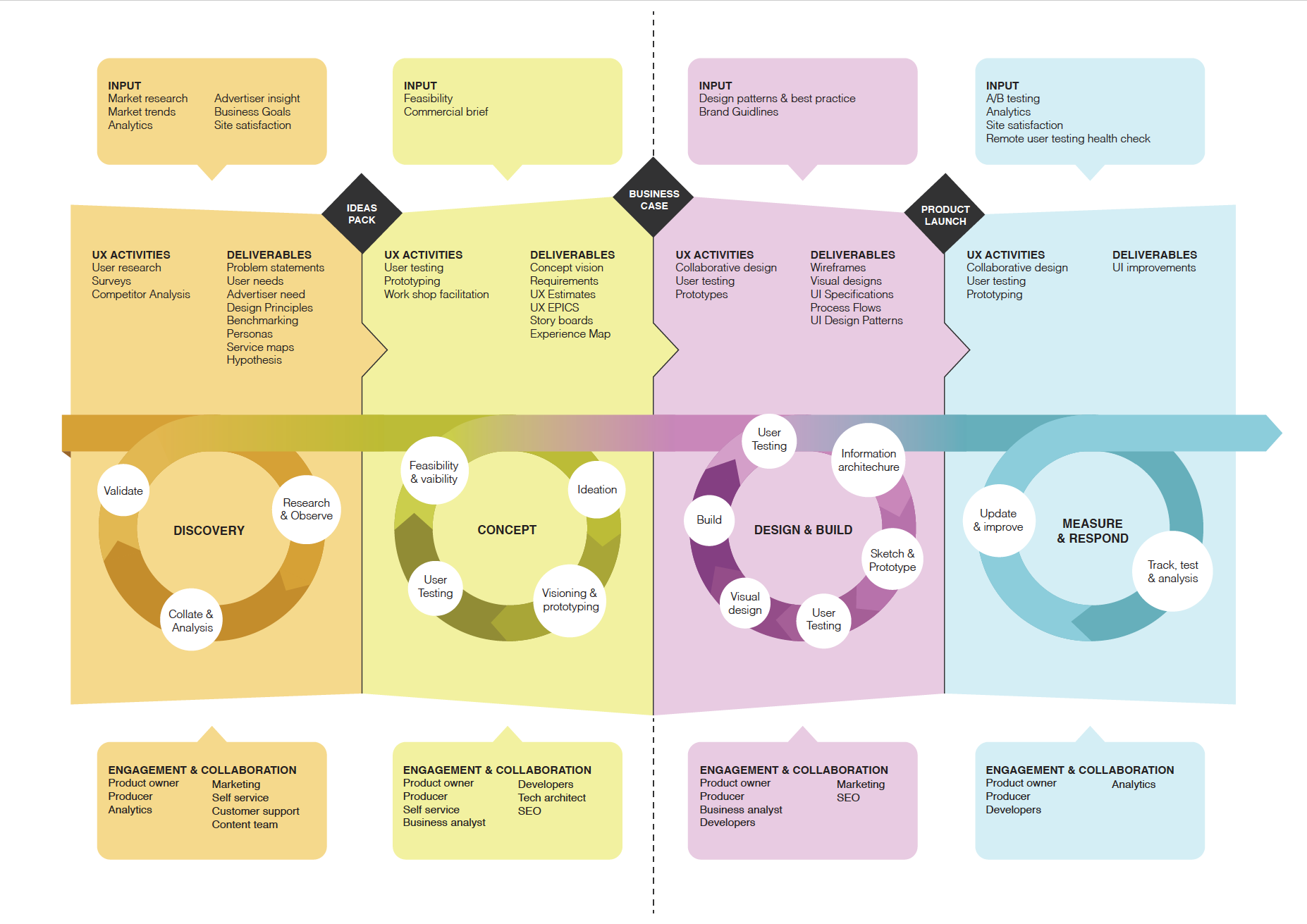User Experience practice is about innovating and finding solutions to real-world problems. Which means we need to find problems, then validate them first before trying to fix them. So how do we go about doing all this? Read on…
I’ve been asked to explain a “Good UX Process” numerous times over the years in consulting. Customers want a formula per se that can solve all their design problems. But unfortunately, it doesn’t exist and there is no set UX process that applies to all.
Every organisation and its problems are unique. They all require different sets of UX activities to determine a positive outcome.
However, there are some general guidelines on:
Every organisation and its problems are unique. They all require different sets of UX activities to determine a positive outcome.
However, there are some general guidelines on:
- What type of UX artefacts can we deliver?
- Who do we engage and collaborate with?
- What kind of UX activities / workshops can we suggest?
To answer the above, I put together a general UX design process with the help of my colleagues a few years back. So here it goes.
Phase I – Discovery
People Involved
- Product Owner (Whoever is funding the project)
- Project Manager (Whoever is overseeing the project)
- Business Analyst (Whoever is managing different teams)
- Analytics
- Marketing
- Information Technology
- User Experience Designer
Deliverables
- Problem Statements
- User Needs
- Design principles
- Benchmarking
- Personas
- Servicer maps
- Hypothesis
Activities
- Discover pain-points
- Discuss solutions to pain points (utopia)
- Analyse competitors in similar space
- Discover potential constraints (IT or culture related)
- Come up with a basic information architecture (homepage elements, navigation and unique pages)
Phase II – Ideation and Concept
People Involved
- Product Owner
- Project Manager
- Business Analyst
- Developers
- Information Technology
- User Experience Designer
- SEO
Deliverables
- Concept Vision
- High Level Requirements
- UX Estimates
- Dev Estimates
- UX Epics
- Story Boards
- Experience Maps
- Navigation
Activities
- User Testing
- Feasibility Prototyping
- Workshop Facilitations
Phase III – Design and Build
People Involved
- Project Manager
- Business Analyst
- Marketing
- Developers
- User Experience Designer
- Visual Designer
- SEO
Deliverables
- Wireframes
- Visual Designs
- User Interface Specs
- Process Flows
Activities
- Collaborative Design Sessions
- 6-ups Designs
- Rapid User Testing
- Wireframes
- UI Trends
Phase IV – Measure and Respond
People Involved
- Project Manager
- Analytics
- Developers
- SEO
Deliverables
- UI Improvements
- UX Enhancements
Activities
- Advanced Analytics
- Collaborative Design Sessions
- User Testing (A/B Testing)
The best way to use this UX process is to post-understanding your client’s requirements, extract the best bits that suit your needs and take it from there.
I hope you guys find this useful!
Category:
Uncategorized 
